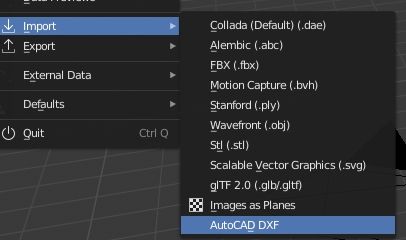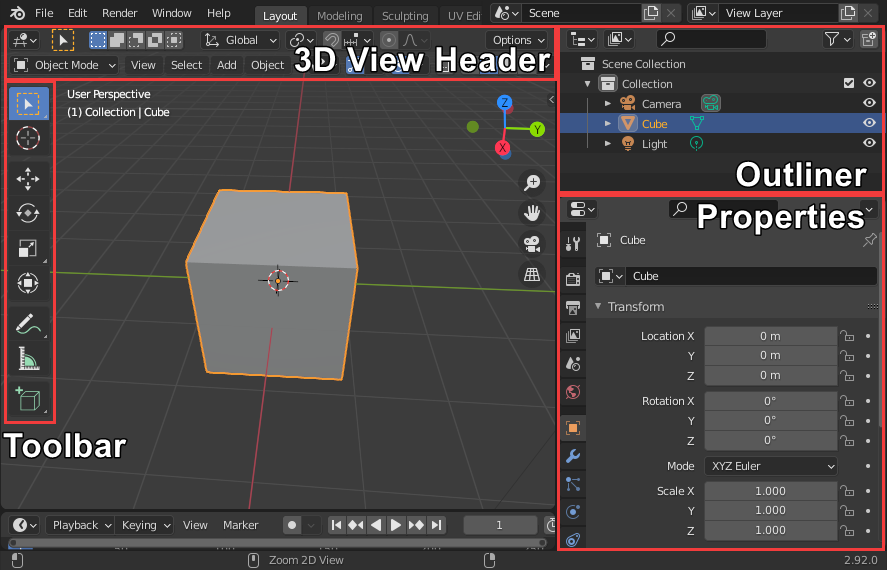

Orthographic is a perfect head on view without the perspective. When using these hot keys, Blender will also put us in an orthographic view. The number 1,3 and 7 will move us to these specific angles. For instance, a front view, top view, or side view. Sometimes we want to have a perfect view from an angle. If it is, or you have stray objects far away in your scene, you will get much further zoomed out. This is helpful when your scene is concentrated in one location and not scattered around. This shortcut will zoom the view so that the entire scene is in focus and the median point of the scene will be the invisible point. This will zoom the view to the selection and move the point we zoom and rotate in relation to.Ī similar operation is shift+c. This is easiest done by selecting an object and press the period on the number pad. Sometimes we want to move the invisible point into a specific location where we want to work. We are not zooming towards a point, instead, pushing the point forward as we move the view back and forth. But in this way the distance between the view and the invisible point will stay constant. This will move us through the viewport like zooming. For instance, we can hold both shift+ctrl together with the middle mouse button pressed and move the mouse. There are other ways to move the invisible point. Panning allows us to move the position we are viewing from, but it also moves the invisible point with the camera as we pan. We zoom in and out in relation to this point and rotate around that same point. When zooming and rotating, we do so in relation to an invisible point in space. Hold ctrl for zooming and shift for panning. Hold the middle mouse button while the mouse is in the 3D viewport and move the mouse to rotate around. Especially if you use something like blam and create cars by matching photos and using tons of cameras then it is super useful to have several layouts for different camera sets.To move around in the 3D world, we use rotate, pan, and zoom. Good parts show as blue, stretched parts show up in all other happy colors.Īlso one super easy and convenient feature in blender is the screen layouts. Good for finding trouble spots on car meshes.

In blender open uv/image editor, press N and under Display turn on "Stretch". Basically it will draw a heatmap on the UVs and stretched uvs are show in different colors. Basically all this just means you can have smooth beveled edges and flat surfaces without extra tris.īlender also has a good uv smoothness/stretching highlighting tool. In that example image both the blender native smoothing and weighted addon use the same mesh but the weighted puts the vertex normals so that flat surfaces are flat. You can get the same effect by using support loops near the edges but that can be lots of extra tris. The surfaces of the cube should be flat but default blender uses averages so the vertexes point to wrong directions which makes the surfaces look round. Here is an image that shows how it helps in ac: Basically with this tool it is easier to get smooth flat surfaces and bevels without adding tons of geometry. I'm not sure if ac supports custom vertices but I did quick test and at least I noticed a difference in sdk. This tool is obviously useful on things other than tires, I just never knew it existed - what actually prompted me to go looking was some stitching, it needs to follow the object it's under (so it's slightly irregular quads) and since this tool attempts to preserve length as best as possible while making all edges parallel, it can unwrap that sort of thing into a completely straight line instantly. Easiest way to do that I think is to go to edge-select mode in the UV editor, rotate it as straight as possible, then use "scale to 0" on all 4 edges, in X direction for vertical, Y direction for horizontal ones, to make them perfect. On step 4 the "active quad" (one you selected first, has a speckled appearance instead of transparent orange) must have 90 degree corners - by default, if you haven't mapped it yet, it'll be mapped to the entire image space (from 0,0 to 1,1) and it'll be square, but if you've already mapped it you might need to double-check that.
#How to go to top ortho view on blender on mac plus
Proper technique in track making plus tipsġ) mark 2 edge loops as seams (ctrl+e, 6) - or don't, a 4x1 or other nonsquare texture is just as valid, only advantage of square is slightly better AF behaviourĢ) select a face to one side of the seam (right click)Ĥ) map UV with "follow active quads" (U, 4)ĥ) scale it down in the UV editor until it takes half the texture Some places to find inspiration and ask questions:ģd track modeling and texturing tutorialsĬar materials / shaders / modelling stuff (add your knowledge here)Īnother good place to find inspiration.


 0 kommentar(er)
0 kommentar(er)
